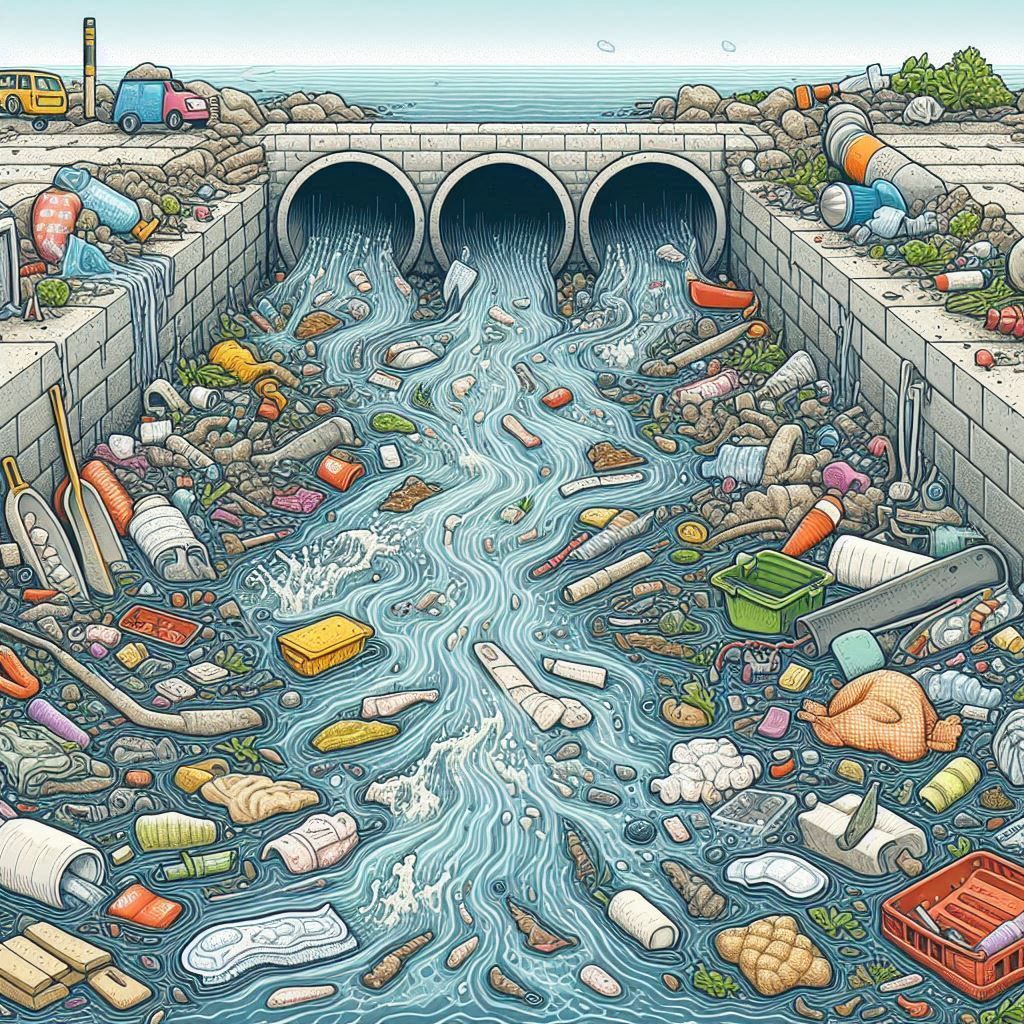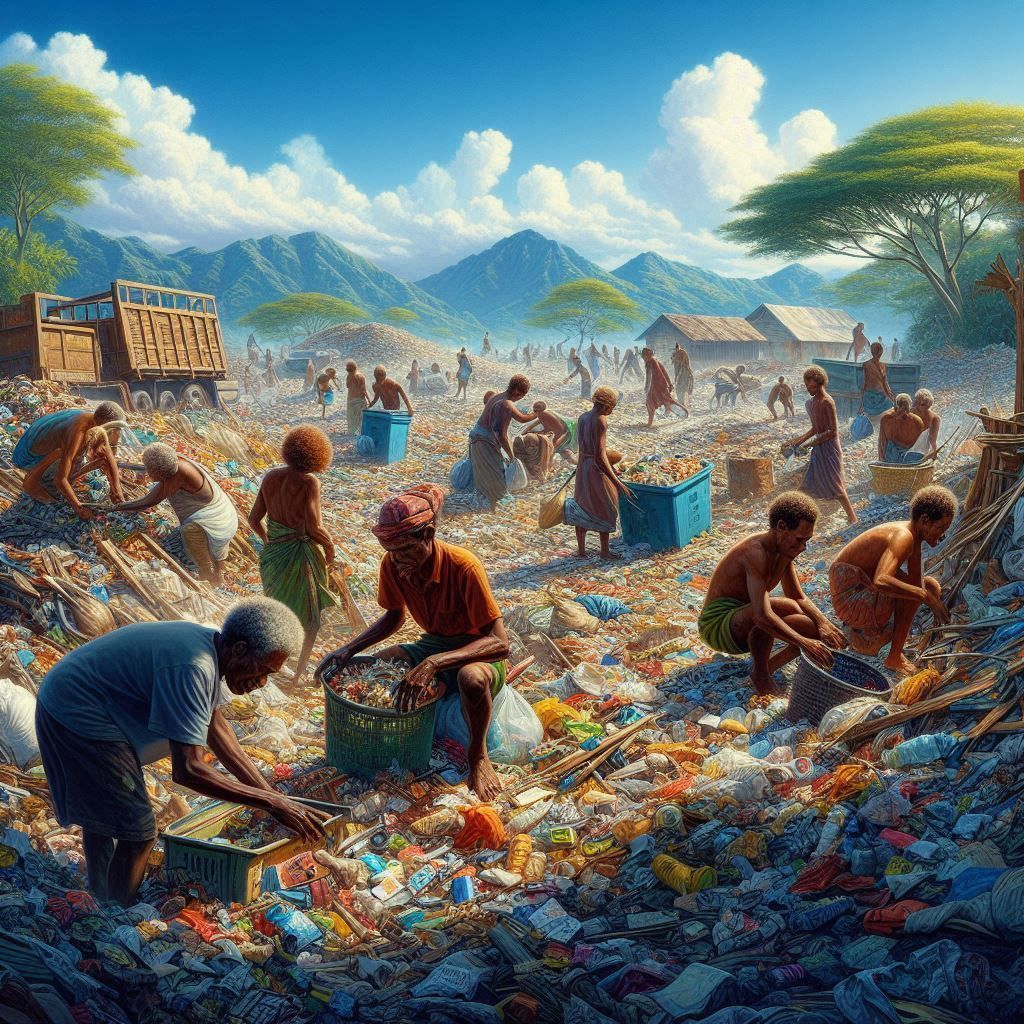- Nalau's Newsletter
- Posts
- Management of Solid Wastes in Papua New Guinea
Management of Solid Wastes in Papua New Guinea
Large municipalities like Port Moresby and Lae generate huge amounts of solid waste annually. These solid wastes contain mostly plastics, kitchen waste, bottles and jars, metals, fabrics and garden refuse. According to one study, a person in Port Moresby discards about 2kg of solid waste per day, or 730kg of solid waste per annum.

Everywhere you go in Port Moresby, you will see solid wastes like plastics, fabrics and metals littering residential areas, drainage systems, waterways, swamps, beaches, mangroves, footpaths and roadsides. This is an eyesore, painting a poor picture of a country that spends millions of kina to send large delegations to the United Nations Conference of Parties to lobby developed nations to finance its efforts to reduce its greenhouse gas emissions, when it had done very little in the last 50 years to manage its solid wastes.
Solid waste discarded per day by city residents are removed by contractors engaged by municipal authorities like the National Capital District Commission in Port Moresby City and the Lae City Authority in Lae City. However, removal of solid waste by contractors in Lae and Port Moresby are usually problematic: waste in some suburbs are not regularly removed due to breakdown in the contractor's vehicles, solid waste not properly packaged are not removed by the contractors, and solid waste spilled by cats and dogs are not removed by the contractors. Sometimes garden refuse is not removed by contractors.
Much of the solid waste in municipalities throughout the country are disposed of in landfills. However, many landfills are now old and have reached their maximum holding capacities, but they are still being used because new landfills cannot be established. The landfills are also plagued by social issues: people living nearby scavenge for food and valuables among the solid waste, and stench and digestate emanating from decomposing solid waste pose direct health risks for people living nearby. Sometimes, solid waste in landfills are burned to reduce load and make room for new load, but the smoke emitted poses health risk to people and sends loads of greenhouse gases into the atmosphere.

Landfills have passed their use-by-date and need to be outlawed in this country. High-tech incinerators have now been developed in America and other developed nations, and this technology can now replace landfills. The high-tech incinerators will address all the social and environmental issues associated with landfills. Greenhouse gas emissions from landfills contributes to the issue of climate change, but the high-tech incinerators are designed to address that issue.
One of the major issues with solid waste management in PNG is the lack of a process in which waste can be packaged, disposed of and removed by contractors. Therefore, we need to put in place a proper process for packaging, disposing and removing solid waste from our towns and cities.
I studied and lived in Japan for almost 4 years, and during this time I observed how efficiently Japanese packaged, disposed of and transported solid waste to incinerators to be combusted. The Japanese solid waste management system was highly effective, and residents of the municipality I lived in were well versed with the system.

Stores and supermarkets sold specific plastic bags, which residents of municipalities could purchase for packaging and disposal of solid waste. Three types of plastic bags were sold: plastic bags with red coloured writings on them were for inflammable wastes like metals and glasses; plastic bags with blue coloured writings on them were for burnable wastes like paper, fabrics and kitchen wastes; and plastic bags with yellow writings on them were for plastic products like water bottles. It was compulsory for residents to buy these 3 different types of plastic bags for waste disposal, and solid wastes packaged any other way would not be removed by contractors.
Disposal areas for solid waste were constructed and fenced by the municipal authority within each suburb in the city. For each apartment, a waste disposal area was constructed for all residents to dispose of their solid wastes. Along streets with houses, a waste disposal area for a number of houses was established, where senior citizens could easily walk to and dispose of their waste. Business houses had their own solid waste disposal areas, and they were required to package and dispose of their wastes in the same manner as residents of the municipality.
Three types of contractors were engaged to come around and remove solid waste from residences and business areas. One contractor was responsible for the removal of burnable solid wastes, one contractor was responsible for inflammable solid wastes, and one contractor was responsible for removing plastic wastes. These contractors only removed what was designated for them to collect, and what was not theirs was left behind.

Any solid waste that was left behind by contractors due to wrong packaging or any other reason was the responsibility of the apartment or housing area concern. The person responsible for solid waste management of an apartment or housing area, usually appointed by the municipal authority, was responsible for proper packaging and disposal of solid waste by residents. He had the responsibility to communicate with the very person whose solid waste was left behind by contractors, to ensure that he or she repackaged his or her wastes properly for the contractors to remove when they came around again.
Inflammable solid waste are transported to metal recyclers or glass recycling plants for recycling. Plastic wastes are transported to plastic recyclers to be processed and reused for the production of new plastic products. Burnable wastes are transported to large incinerators where they are combusted.
In Fukuoka City, where I lived and studied for almost 4 years, burnable solid wastes are combusted to generate heat, which is then used to produce electricity for the city. Some of the electricity produced is used by residences and business houses in the city. Moreover, some of the electricity is used to heat artificial hot springs, called "on sen" in Japanese, where city residents can come to pay and take hot baths. Consequently, the incinerators not only eliminated the city's solid waste by combusting it, but they also made money by selling power and marketing the use of hot springs for bathing to city residents.
We just celebrated 50 years of Independence in September this year, but we are still struggling to manage solid wastes from our towns and cities. Moreover, it seems we are yet to find a road map that will guide us towards finding a better solution for the efficient management of solid wastes in our towns and cities. Therefore, the Japanese system of solid waste management I discussed herein should give us some guidance as to how we should develop our own system to manage solid waste from our towns and cities.
In PNG, the responsibility for solid waste management was once with provincial governments. However, due to the urgency for climate change mitigation through proper waste management, the Conservation and Environmental Protection Authority (CEPA) may have taken over this responsibility now. This makes CEPA the authority on solid waste management in PNG. Therefore, the development of systems, policies and legislation in this regard lies with this organization.